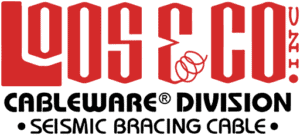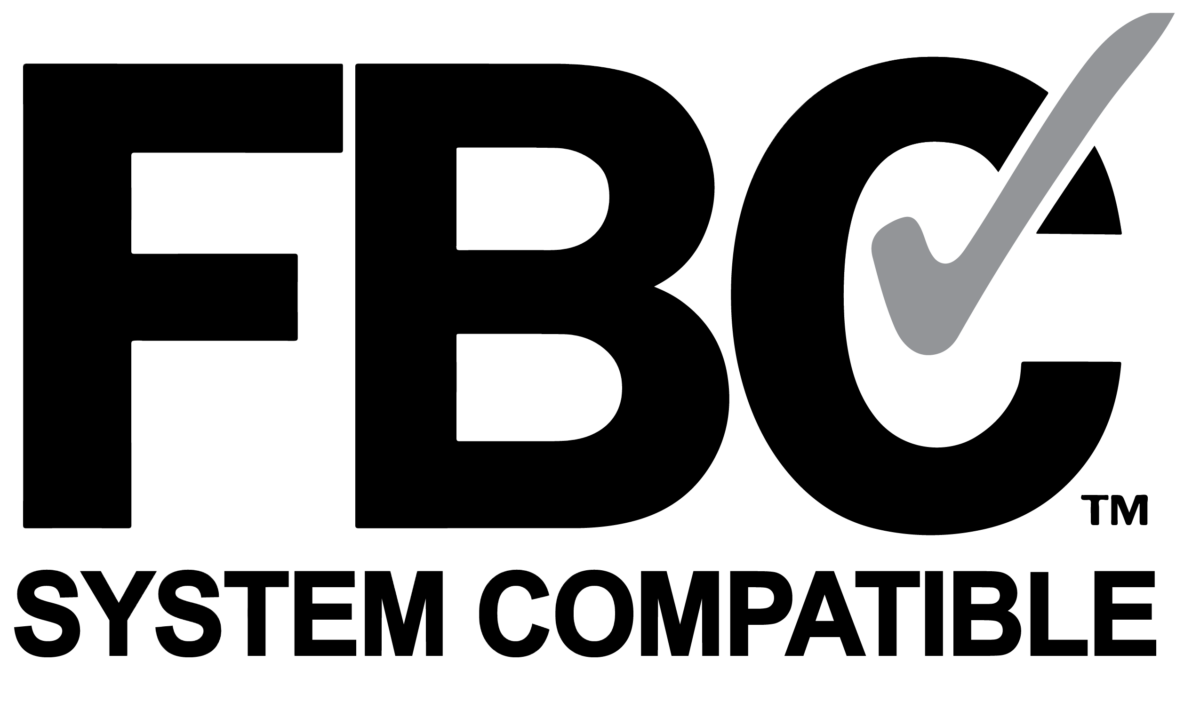We are happy to announce that we have recently completed a series of 4 seismic installation how-to videos.
- Introduction to Loos & Co. Seismic Bracing Products
- Lateral sway brace installation
- Longitudinal sway brace installation
- 4-way sway brace installation
Each video in the series will give you detailed instructions on the proper installation of our Seismic Cable Bracing system from start to finish in both English and Spanish.
What is Seismic Cable Bracing Video Transcript [ENG]
Welcome Back to Loos Tube
In this series we’ll be talking about our line of seismic cable bracing
Most of the damage caused to a business during an earthquake is not to the building itself
The majority of the loss is due to improperly secured non-structural elements such as fire sprinklers, HVAC systems, plumbing, or electrical trace
Loos’ seismic cable bracing system is an easier to install more cost-effective method of securing these non-structural components to withstand seismic activity
Loos seismic cable comes pre-stretched, color coded for ease of selection and inspection, and is certified by many of the industry’s top building and safety certification compliance and risk mitigation companies
The cable is powder coated in house and available in four colors which represents a certified load rating
Gold cable is the most popular size of cable with a load rating of 600 pounds
Allowing it to be used across most applications
If an application requires more brace strength, Loos’ orange cable has a load rating of 1100 pounds
For even heavier loads, our seismic bracing system offers green cable which is rated to 2800 pounds
And black cable with a load rating of 4600 pounds
The cable is available in two forms
Bulk spools of 250 feet and preassembled kits
Both were designed with your convenience on the job site in mind
The spools are lightweight enough to move around with ease
The cable kits include two or four lengths of cable in your specified color and brace length
With your choice of attachment fitting on one end and two or four zinc plated sleeves
These kits take all of the guesswork out of completing a brace
Simply climb your ladder, tear open the package, and install
There are several methods of attaching the cable to the building structure
Including wrapped it around a bar joist and securing it with a swaged sleeve
Using a bolt and a pre attached stake eye
Or using one of our seismic anchoring fittings
These fittings come in a variety of bolt hole sizes to fit your unique needs
With an option of one or two cable holes and are also available with a slotted fastener mount for retro fit applications if needed
Loos Naples is a well-known name in the aerospace industry
Our quality management system is certified to ISO:9001 and it is with this dedication to high quality and safety that we manufacture our seismic bracing system
To aid users through every step of the process, we provide a set of resources that were drafted by our in-house engineers, Loos and Company’s Engineer’s Tools
The design guides are a comprehensive reference that provide product cut sheets, installation instructions, and complete tables outlining load ratings for each fitting mounted in various materials
Our engineer’s tools online seismic calculator takes all of the guesswork out of completing NFPA forms when designing a project
This powerful tool completes all of the complex calculations required for a cable bracing project
Alerts the user if any input doesn’t meet NFPA standards
And prints a completed NFPA form to submit to the local authority having jurisdiction
A bill of materials can also be generated for ease of ordering
Thank you for watching
Please click these links for the next videos in the series
How to Install Lateral Transverse Bracing Video Transcript [ENG]
Welcome back to Loos Tube
This next video will show how to install a lateral sway brace also known as a transverse sway brace on a pipe
As with any brace, begin by securing the cable to the structure in the manner specified by your completed drawings
Refer to your design specifications from the Engineer’s Tools Calculator or to your design manual
The first method of attaching to the structure is wrapping the cable around a steel beam or the top or bottom cord of a bar joist
Then swaging an oval sleeve
Be sure to avoid swaging the sleeve too close to the joist
The angle maintained by the loop should be less than 45 degrees
Another method is securing with a bolt on a factory installed stake eye
The third method of attachment is using one of our seismic anchoring fittings and a swaged loop
Please note that there is no need to use a thimble with these specially designed fittings
Both the SAF series and stake eyes can be mounted in concrete, wood, or steel
Once the cable is properly attached to the structure you may begin the attachment to the pipe
The cable should be aligned perpendicular to the direction of the pipe
Insert your sleeve onto the free end of the cable
Slide the sleeve up the cable to allow working room
Wrap the cable around the pipe twice, forming a simple knot on the second wrap
Insert the loose end into your oval sleeve and pull the cable removing any slack
Be sure not to pull so tight that excess force is applied to the pipe
Before you swage the fitting, ensure that the sleeve is positioned a minimum distance of one and a half pipe diameters away from the pipe
This will ensure that the minimum 45 degree angle in the cable is maintained
Check again that the cable is tensioned properly
Meaning there is no slack in the cable from the brace to the structure
Crimp the sleeve with the required number of compressions
Gold and orange cable sleeves require two compressions and green and black cable sleeves require three
Refer to your design guide for more detailed information
After the swage is complete, cut any cable extending beyond the sleeve
Cable sway bracing works in tension only which means that two braces must always be applied opposing each other
Repeat this process in the same manner on the opposite side of the pipe
Your lateral cable brace is now complete
Thank you for watching
Please click these links for the next videos in the series
How to Install 4-Way Bracing Video Transcript [ENG]
Welcome back to Loos Tube
This video will demonstrate how to install a 4-way brace at a coupling type plant or tee fitting
As with any brace, begin by securing the cable to the structure in the manner specified by your completed drawings
Refer to your designs specifications from the Engineer’s Tools Calculator or to your design manual
The first method of attaching to the structure is wrapping the cable around a steel beam or the top or bottom cord of a bar joist, then swaging an oval sleeve
Be sure to avoid swaging the sleeve too close to the joist
The angle maintained by the loop should be less than 45 degrees
Another method is securing with a bolt on a factory installed stake eye
The third method of attachment is using one of our seismic anchoring fittings and a swaged loop
Please note that there is no need to use a thimble with these specially designed fittings
Both the SAF series and stake eyes can be mounted in concrete, wood, or steel
Once the cable is properly attached to the structure you may begin the attachment to the pipe
A four-way brace is simply a lateral brace and a longitudinal brace both applied at the same location on a pipe next to a clamp, grooved coupling or tooth fitting
To complete your lateral brace, first insert your oval sleeve onto the free end of the cable that is perpendicular to the pipe
Slide the sleeve up the cable to allow working room
Wrap the cable around the pipe twice, forming a simple knot on the second wrap
Insert the loose end into your oval sleeve and pull the cable removing any slack
Be sure not to pull so tight that excess force is applied to the pipe
Before you swage the fitting, ensure that the sleeve is positioned at a minimum distance of one and a half pipe diameters away from the pipe
This will ensure that the maximum 45-degree angle in the cable is maintained
Check again that the cable is tensioned properly
Meaning there is no slack in the cable from the brace to the structure
Crimp the sleeve for the required number of compressions
Gold and Orange cable sleeves require two compressions and green and black cable sleeves require three
Refer to your design guide for more detailed information
After the swage is complete, cut any cable extending beyond the sleeve
Repeat this process in the opposite direction on the other side of the clamp grooved coupling or tee fitting
Then move on to the longitudinal brace
For the longitudinal brace the cable will be aligned parallel to the pipe on either side of the clamp grooved coupling or tee fitting
Insert your oval sleeve onto the free end of the cable
Slide the sleeve up the cable to allow working room
wrap the cable around the pipe twice forming a simple knot on the second rack on the far side of the clamp or coupling
Ensure that the cable lies against any fitting and not on it
Insert the loose end into your oval sleeve and pull to adjust the cable
Removing any slack
Be sure not to pull so tight that excess force is applied to the pipe
Before you swage the fitting, ensure that the sleeve is positioned at a minimum distance of one and a half pipe diameters away from the pipe
This will ensure that the maximum 45 degree angle in the cable is maintained
Check again that the cable is tensioned properly
Crimp the sleeve for the required number of compressions
Cut any cable extending beyond the sleeve
Repeat this process in the same manner in the opposite direction
Ensuring that the cable is looped around the opposite side of the coupling or clamp
Your four-way brace is now complete
Thank you for watching
Please click these links for the next videos in the series
How to Install Longitudinal Bracing Video Transcript [ENG]
Welcome back to Loos Tube
This video will demonstrate how to install a longitudinal sleeve brace at a coupling or clamp
As with any brace, begin by securing the cable to the structure in the manner specified by your completed drawings
Refer to your designs specifications from the Engineer’s Tools Calculator or to your design manual
The first method of attaching to the structure is wrapping the cable around a steel beam or the top or bottom cord of a bar joist, then swaging an oval sleeve
Be sure to avoid swaging the sleeve too close to the joist
The angle maintained by the loop should be less than 45 degrees
Another method is securing with a bolt on a factory installed stake eye
The third method of attachment is using one of our seismic anchoring fittings and a swaged loop
Please note that there is no need to use a thimble with these specially designed fittings
Both the SAF series and stake eyes can be mounted in concrete, wood, or steel
Once the cable is properly attached to the structure you may begin the attachment to the pipe
The cable should be aligned parallel to the pipe
Insert your oval sleeve onto the free end of the cable
Slide the sleeve up the cable to allow working room
Wrap the cable around the pipe twice forming a simple knot on the second wrap on the far side of the clamp or coupling
Ensure that the cable lies against any fittings and not on it
Insert the loose end into your oval sleeve and pull to adjust the cable, removing any slack
Be sure not to pull so tight that excess force is applied to the pipe
Before you swage the fitting ensure that the sleeve is positioned at a minimum distance of one and a half pipe diameters away from the pipe
This will ensure that the maximum 45 degree angle in the cable is maintained
Check again that the cable is tensioned properly meaning there is no slack in the cable from the brace to the structure
Crimp the sleeve with the required numbers of compressions
Gold and orange cable sleeves require two compressions and green and black cable sleeves require three
Refer to your design guide for more detailed information
After the swage is complete, cut any cable extending beyond the sleeve
Cable sway bracing works in tension only which means that two braces must always be applied opposing each other
Repeat this process in the same manner in the opposite direction, ensuring that the cable is looped around the opposite side of the coupling or clamp
Your longitudinal brace is now complete
Thank you for watching
Please click these links to the next videos in the series








